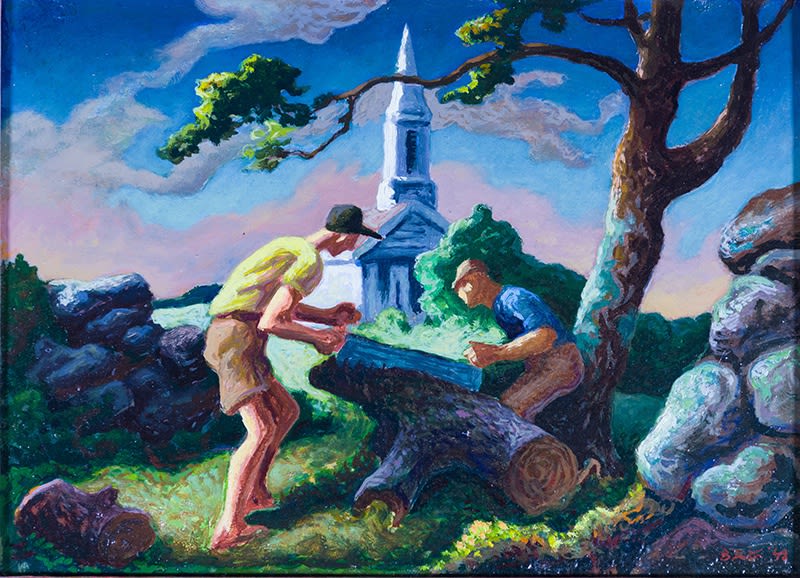The American public could easily relate to the down-home, heartland feel of the work of Thomas Hart Benton. His Regionalist paintings and lithographs depicted the hard-working people and culture of his home state of Missouri.
His father was a U.S. Congressman, who hoped his son would follow in his footsteps, but Benton wanted to be an artist. With his mother’s financial support, Benton went to the Art Institute of Chicago and then to to study at the Academie Julian, in Paris, in 1909.
The Wild Side of Thomas Hart Benton
Thomas Hart Benton’s life was very different from the scenes of Americana that he depicted in his many paintings and commissioned murals. He lived, painted and taught in New York for twenty years, before returning to Missouri.
Art critic, Henry Allen, described Benton as an artist with a wild side. “Despite his vigorous reading and colorful writing,” Allen wrote, “Benton was no finely sliced aesthete. Instead, he was an angry, hard-drinking, harmonica-playing, well-read little backwoods aristocrat from a small town in southwestern Missouri, a man given to the sad pugnaciousness called a little-man complex. He was called “virile” back when that was a compliment.”
The Irony in Benton’s Life
After studying in Paris, Benton returned to New York in the early 1920’s and said that his time in Europe had made him an “enemy of modernism”, ironically, the art movement that his teaching generated. Benton taught at the Art Students League of New York from 1926 to 1935. Jackson Pollock, one of the leading figures in the Abstract Expressionist movement, was one of Benton’s favorite students. They traveled through the West together in the 1930s, and Benton had a profound effect on Pollock’s work and life.
Henry Allen explained the shifting dynamic between teacher and student, “By the late 1940s, Benton had lost the claim he’d staked. The new media hero was Pollock, who had been Benton’s student and sometime ward since 1930. Benton praised Pollock’s abstractions, and the two often exchanged wisecracks. In 1949, 15 years after Benton was on the cover of Time, Pollock was on the cover of Life. Pollock, with his mental problems and alcoholism, would be telephoning Benton until he died at 44 in a car crash.”
Both Benton and Pollock had an impact on American art. Benton’s murals are enduring, visually stunning and treasured.
Thomas Hart Benton Available at Surovek Gallery
Please contact us for more information about Woodcutters at Chilmark, Morning Train/Soldier’s Farewell, Haystack, or any of the other fine paintings and lithographs by Thomas Hart Benton available at Surovek Gallery.





